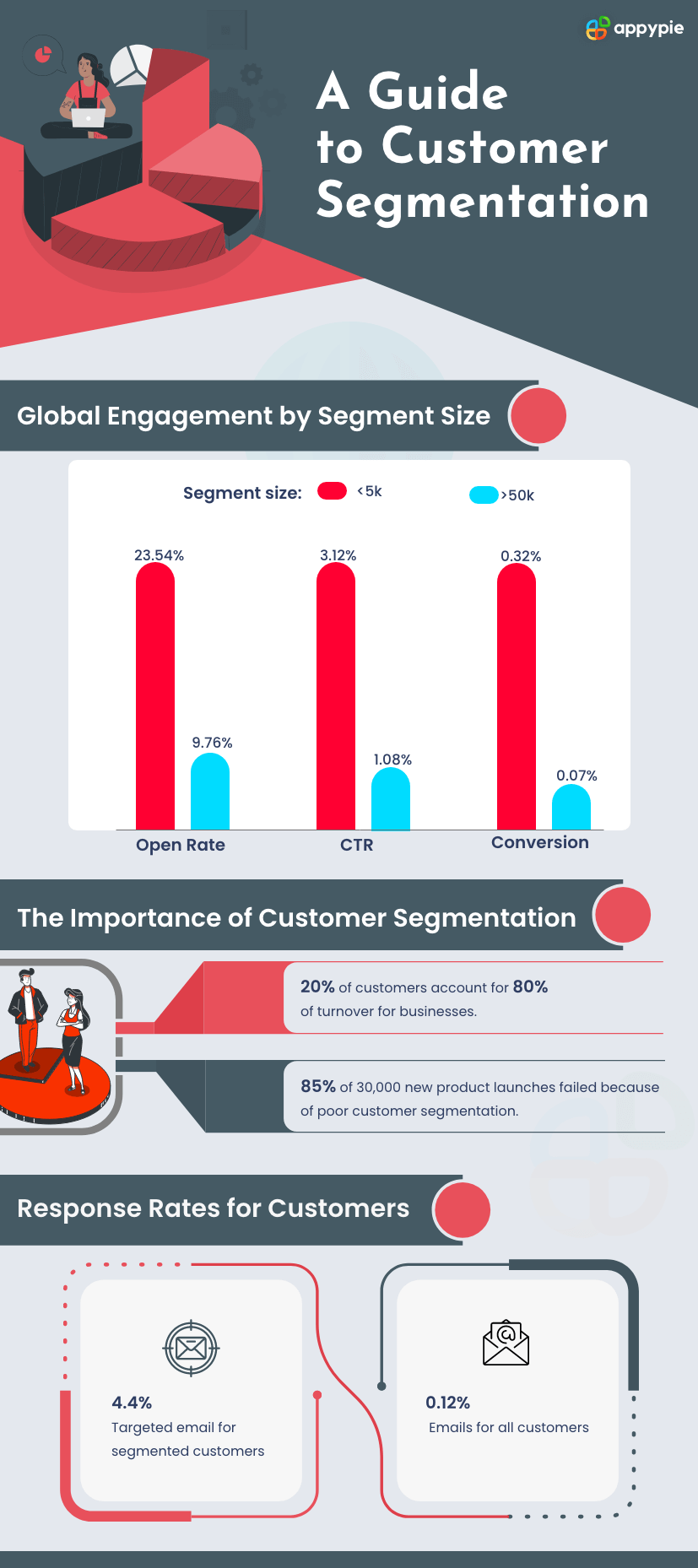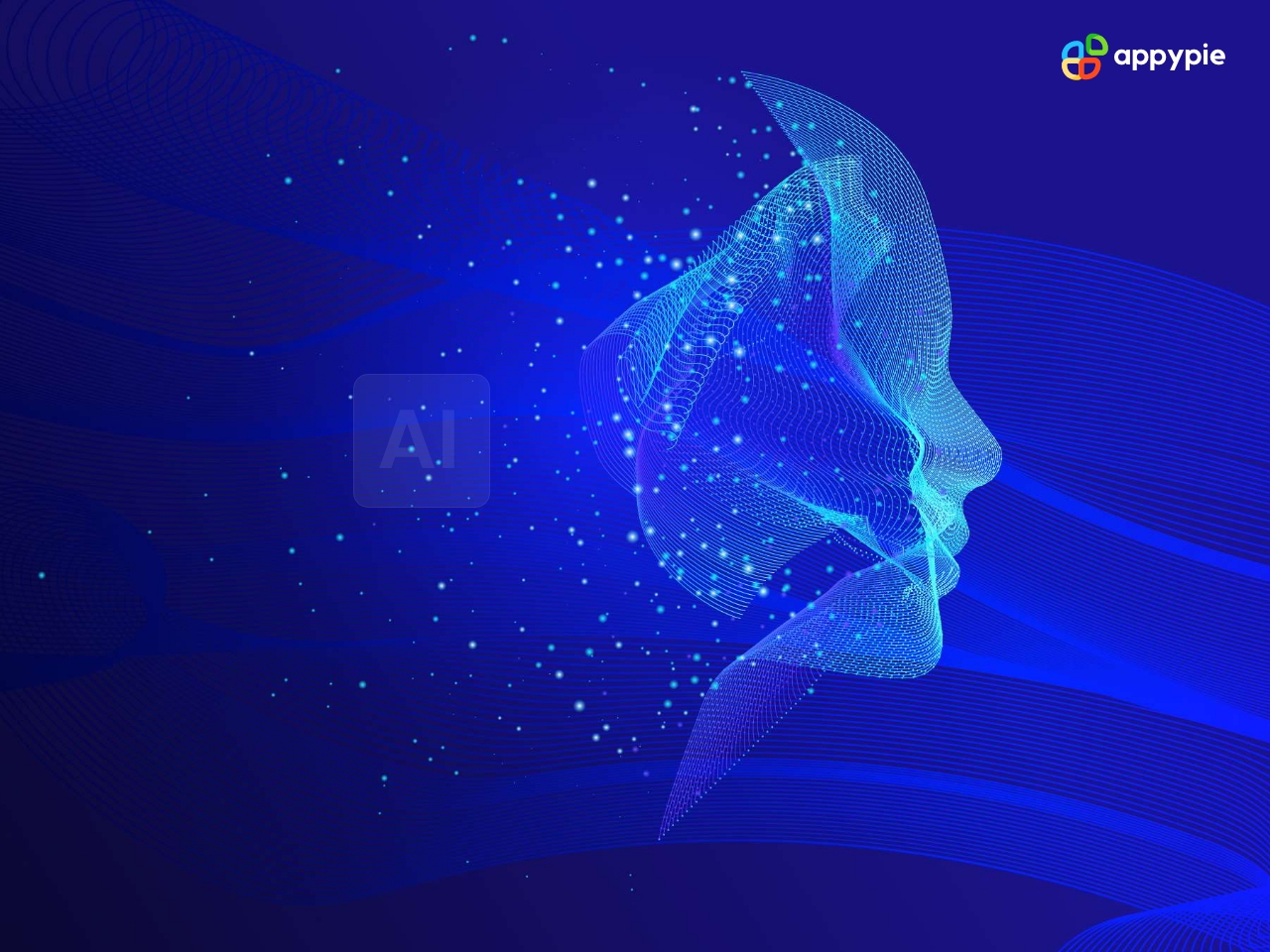Customer Segmentation: A Guide to Business Growth

By Abhinav Girdhar | Last Updated on April 24th, 2024 9:47 am | 5-min read
Customer segmentation is a way to learn more about the customers and their needs. It helps businesses improve the customer experience and maintain a long-lasting relationship with them.
Table of Contents
What is Customer Segmentation?
Customer segmentation is the process of dividing the customers into different groups based on their common qualities and characteristics. The primary objective of customer segmentation is to identify the needs and buying behavior of customers in each group so that companies can easily create targeted marketing campaigns that boost customer loyalty and conversions. Before we go ahead explaining more about customer segmentation, check out the below infographic to gain some insights about it.
Why Customer Segmentation is Important?
Customer segmentation can have a great impact on customer management. It is necessary for a growing business as it can help them better understand their customers and their market.By dividing customers into different common segments, the company can address each customer in the most effective way and meet their needs at any given moment. Customer segmentation allows marketers to identify discrete groups of customers with a high degree of accuracy based on demographic, behavioral and other indicators, thereby helping them achieve their goal of maximizing the value from each customer. If customer segmentation is done right, businesses can achieve multitude of other benefits such as –- Increased Customer Retention As per certain reports, about 75% of satisfied customers are more likely to stay with the organization who regularly meet their needs. With customer segmentation, businesses can follow a personalized approach for each of their customers, gaining their trust and loyalty in the long run.
- Enhanced Competitiveness With increased customer retention, businesses are sure to improve their growth and gain an upper edge over their competition.
- Establishes Brand Identity By customer segmentation, businesses can easily create personalized marketing strategies to make customers aware about their brand. This in turn can increase the product engagement to a greater level, helping businesses create a positive image in the market.
- Better Customer Relationship One of the crucial advantages of customer segmentation is that it helps businesses deeply understand their customer needs, which proves to be beneficial in maintaining a healthy relationship with the customers.
- Improved Channel of Distribution Customer segmentation helps businesses improve their channel of distribution. With knowledge of the right target audience, companies can choose a precise channel of distribution and effectively meet their customer needs at minimal cost.
Customer Segmentation Models
Now that we have shed some light on what customer segmentation is and why it is important, let’s delve in deeper and learn about the most common customer segmentation models. Although this list may not cover each and every model, but it will give a starting point to the businesses for organizing their customers more effectively.- Demographic Segmentation Demographic segmentation is the process of dividing customers based on their age, gender, income, education, and marital status.
- Geographic Segmentation In geographic segmentation, the customers are separated based on their country, state, city and town.
- Psychographic Segmentation The third on the list is psychographic segmentation. In this segmentation model, customers are generally divided into the groups based on their personality, attitude, values and interests.
- Technographic Segmentation This customer segmentation model is focused on separating customers based on the mobile use, desktop use, apps and software.
- Behavioral Segmentation In behavioral segmentation, the customers are divided into different groups based on their tendencies and frequent actions, feature or product use, and habits.
- Needs-Based Segmentation The sixth model on our list is needs-based segmentation. This segmentation model includes grouping customers based on their specific needs.
- Customer Journey Segmentation The customer journey segmentation is the process of grouping customers based on their time period using the product or service.
- Value-Based Segmentation Value-based segmentation is the customer segmentation model in which customers are divided based on their value to the business.
How to Segment Customers?
Customer segmentation basically requires a business to gather specific information – data – about their customers and analyze it thoroughly to identify the patterns that can be used for creating different groups. While going ahead with customer segmentation, a business must work through the following strategy so that it bears fruitful results in the future.- Determining the Goals The first and foremost task businesses need to do is to determine their customer segmentation goals, i.e., they need to ask themselves why they are spending time on segmentation and what they hope to achieve from the process. By answering these questions, they can easily go on to develop the rest of their strategy in a way that will help them improve their business growth and gain success.
- Creating Customer Groups Once the goals of customer segmentation are finalized, the next step comes creating customer groups. Check out different customer segmentation models to determine how to do this the right way. One thing to note here is that there is no hard and fast rule to customer segmentation, it totally depends on the business, its customers and its goals.
- Targeting Customer Groups The third step of this strategy includes finding out the way to target and reach the customer groups. The best way of doing it is to ensure that all the teams, such as product, marketing, sales, customer support, etc., have clear knowledge about the customer groups so that they can effectively target them, without any complexities.
- Analyzing Customer Segmentation The final step of this strategy includes analyzing the customer segmentation. It is a crucial process as it helps businesses gain insights into the way they’ve organized their customers, allowing them to make necessary updates and changes, in case if needed. One of the benefits of customer segmentation analysis is that it gives businesses the opportunity to conduct experiments with new ways of grouping that makes most sense. This in turn improves their customer service and helps them get the most out of each customer. Apart from all of this, businesses should also regularly keep track of customer groups whenever there is a product or service update, or any changes in buyer personas or branding. It can not only help them reorganize some or all of their customer segments, whenever the need be, it can also help them understand their customer needs more specifically.
Customer segmentation can transform any business and take it to the new heights by allowing them to effectively communicate with the customers in a more personalized way. It can definitely be a game changer when it comes to boosting conversions and reaching out to the target audience through the efforts of the team, including marketing, sales, service, product, etc. If you are looking to personalize your support experience, while increasing customer satisfaction and engagement, Appy Pie can help. The no-code platform provides an extremely user-friendly live chat software to bump up your customer support. Using Appy Pie Live Chat, businesses can easily create different customer groups based on their similar buying patterns, queries, location, etc. So don’t wait long, create your own customer segmentation and grow your business like never before!
Related Articles
- How to Use Facebook Messenger Bots for Business?
- 11 Most Powerful Elves in Middle Earth, Lord of the Rings & Rings of Power
- How to Create Google Calendar Events from a Google Sheets Spreadsheet
- SV4D: Dynamic 3D Content Generation with Multi-Frame and Multi-View Consistency
- How Automated Customer Service Helps Scale Your Customer Support
- 21 Best Facebook Page Design Hacks to Boost Audience Engagement
- SendGrid vs. Mailchimp: Which Email Marketing Tool is Better to Use in 2024?
- 12 Ways to Increase Sales for Your Cleaning Business
- What is Outbound Sales? Importance + Best Practices
- How to Build an Azure Chatbot
Most Popular Posts
- 9 Most Secure Email Services & the Security Measures they Practice
- Top 5 Drift Integrations: Unlock Business Potential
- Exploring Diverse LLM Use Cases: Industry Specific Applications of LLMs
- How to Build an Email Marketing List [+30 Strategies for Email List Building]
- 20 Ways to Get More Clients for Your Architecture Firm in 2024
